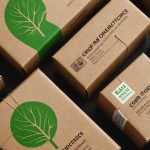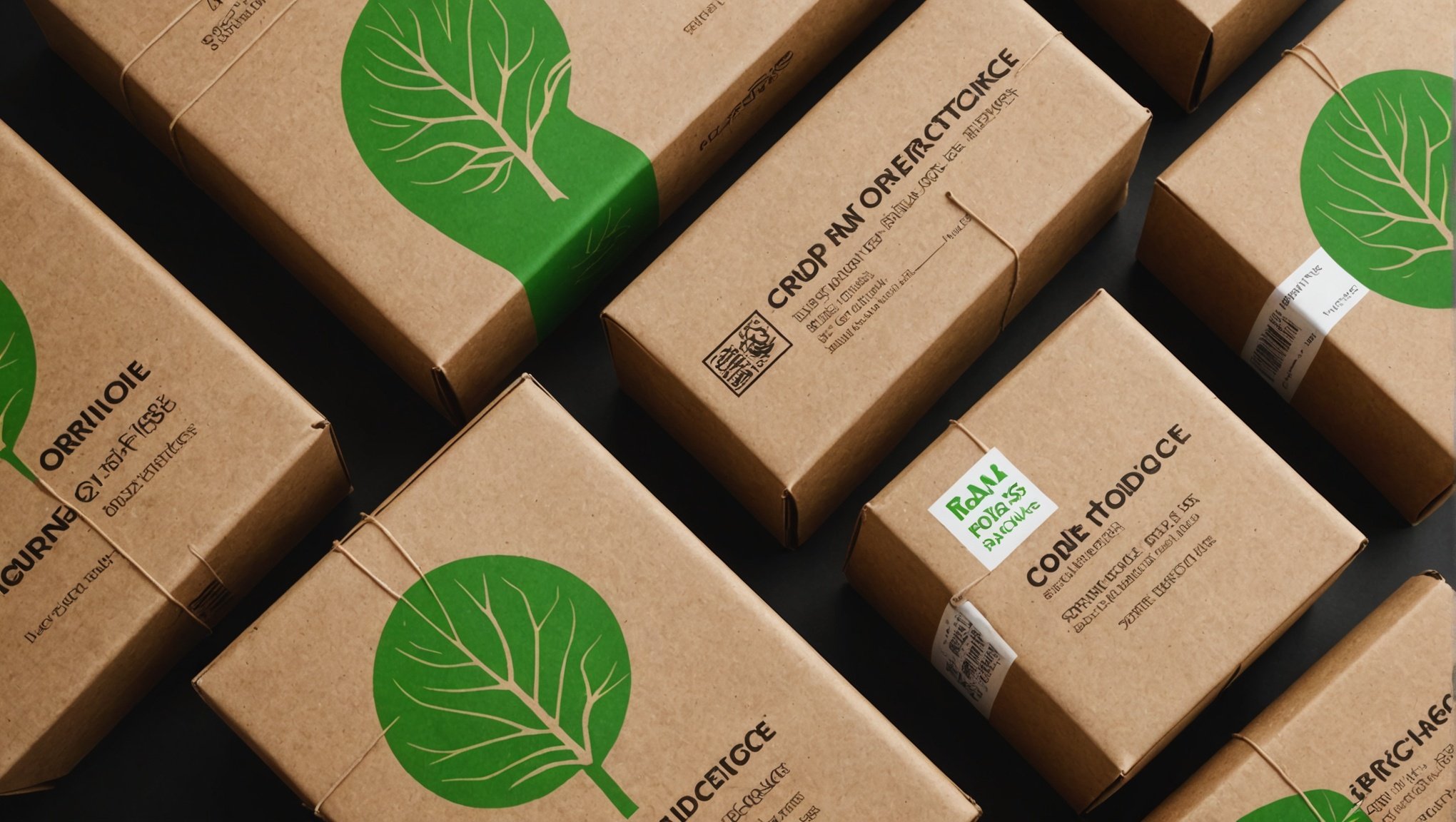Overview of Eco-Friendly Packaging in the UK
Eco-friendly packaging is revolutionising the way products are presented and consumed. Defined by its minimal impact on the environment, it encompasses materials and processes that reduce waste and pollution. Sustainable practices, which are paramount in the development of eco-friendly packaging, encourage the use of recyclable, biodegradable, or reusable materials. These practices aim to conserve natural resources, thereby supporting the environment’s long-term health.
In the UK, the demand for eco-friendly packaging is burgeoning. Consumers increasingly prioritise sustainability, propelling companies to innovate and adhere to eco-friendly solutions. This trend is evidenced by a shift from single-use plastics to materials like paper, glass, and metals. Businesses are not only responding to consumer demands but also aligning with UK regulations that encourage or mandate sustainable practices.
In the same genre : Unlocking the Power of Predictive Analytics: Transform Your Inventory Management Strategy in UK Retail
Central to this movement are UK regulations that influence packaging choices significantly. Policies like the Plastic Packaging Tax incentivise reducing single-use plastics, encouraging companies to explore more sustainable alternatives. The government also implements stringent recycling standards, requiring companies to meet specific criteria, ensuring materials are responsibly sourced and disposed of. These regulations are integral to fostering an environment where eco-friendly packaging is not just a preference but a necessity. This shift underscores a commitment to sustainability that both meets consumer expectations and complies with legislative requirements.
Sustainable Materials for Food Packaging
The food packaging industry is increasingly looking towards sustainable materials to reduce environmental impact. These materials include biodegradable options and recyclable packaging, which serve as crucial alternatives to traditional plastics.
Also to read : Unlocking the Potential: Exploring the Advantages and Hurdles of Implementing Blockchain in UK Supply Chains
Biodegradable options are designed to break down naturally over time, reducing landfill waste and pollution. Materials such as PLA (polylactic acid), derived from cornstarch, and PHA (polyhydroxyalkanoate), produced by microbial fermentation, are popular choices. They offer excellent compostability but may require specific conditions to decompose efficiently.
In contrast, recyclable packaging typically uses materials like paper, cardboard, glass, and certain plastics that can be processed and reused multiple times. Recycling helps conserve resources and energy. However, it requires effective waste management and consumer participation to be successful.
Choosing between biodegradable and recyclable options depends on various factors, such as local waste management facilities, product requirements, and environmental goals. Each offers unique benefits and challenges.
In the UK, key suppliers of sustainable packaging materials include Vegware, known for its fully compostable range, and DS Smith, which provides innovative recycling solutions. These companies lead the way in offering diverse eco-friendly products to suit various food packaging needs. Harnessing such innovations is pivotal for a sustainable future in the packaging industry.
Designing Eco-Friendly Packaging Solutions
Creating eco-friendly packaging solutions involves integrating sustainable design principles that attract user engagement. Minimalism plays a crucial role here, allowing businesses to use fewer materials without compromising quality. By focusing on minimalism in packaging design, companies not only reduce waste but can also lower costs significantly.
Principles of Eco-Friendly Design
To achieve true sustainability, packaging design should prioritize effective material use. The key is balancing minimalism with functionality, ensuring that the product remains protected while being environmentally conscious. A minimalist approach typically embraces simplicity, reducing clutter in design, which can significantly cut down on materials used.
Customization and Branding
While minimalism is essential, one must also consider how packaging represents the brand identity. Successful brands like Apple and Lush have achieved this balance by incorporating unique elements in minimalistic, eco-friendly designs. These case studies show how customized packaging can retain brand strength and connect with eco-conscious consumers.
Consumer Engagement Strategies
Engaging consumers through eco-friendly designs is pivotal for driving purchasing decisions. An aesthetically pleasing yet simple packaging design can enhance user engagement, conveying a commitment to sustainability which resonates with consumer values. Clear and informative packaging can educate consumers about the environmental benefits, creating loyalty and influencing buying behaviour.
Regulations and Compliance for Eco-Friendly Packaging
Navigating the landscape of packaging regulations in the UK is essential for businesses aiming to align with eco-friendly goals. The UK has implemented standards that impact manufacturing, waste management, and compliance. Understanding and adhering to these regulations ensures not only legal conformity but also contributes to sustainability efforts.
To begin, businesses must be familiar with the Producer Responsibility Obligations. This framework holds producers accountable for the packaging they place on the market. It necessitates that a certain percentage of packaging waste is recovered or recycled, promoting waste management through responsible disposal practices. Failure to comply results in penalties, which can be both financial and reputational.
An integral aspect of compliance is understanding the labeling requirements. Products must clearly indicate the type of materials used and how they can be disposed of or recycled. This transparency is crucial in encouraging proper waste management behaviors among consumers. Non-compliance in labeling not only misleads consumers but also risks legal actions and fines that can impact a business’s bottom line significantly.
The implications of non-compliance are profound. Beyond legal penalties, there is an increasing expectation from consumers for businesses to demonstrate environmental responsibility. Thus, integrating comprehensive packaging and waste strategies not only complies with UK regulations but also enhances brand reputation and supports long-term sustainability objectives.
Sourcing Eco-Friendly Packaging Solutions
Exploring the right sourcing strategies for eco-friendly packaging solutions begins with identifying sustainable suppliers. This involves researching those who prioritize environmentally friendly materials and practices. One effective approach is to engage with industry networks that focus on sustainability, as they often provide lists of vetted suppliers with strong sustainability credentials.
Building partnerships with local and ethical suppliers is another key strategy. Local suppliers not only reduce carbon footprints due to decreased transportation needs, but collaborating with those who uphold ethical practices ensures a holistic approach to sustainability. Establishing long-term relationships with these suppliers can lead to mutual benefits and innovations in sustainable packaging.
When selecting suppliers, it’s crucial to rigorously evaluate their sustainability credentials. This can include examining their certifications, such as those from the Forest Stewardship Council or similar organizations, which attest to responsible sourcing practices. Suppliers should also be assessed on their transparency regarding the sourcing of materials and their commitment to reducing environmental impact.
By utilizing these strategies, businesses not only contribute to a more sustainable future but can also enhance their own brand reputation. It’s important to make informed choices to ensure packaging solutions contribute positively to both the environment and business objectives.
Implementing Eco-Friendly Packaging Practices
To seamlessly integrate eco-friendly packaging into existing workflows, a systematic approach is crucial. Begin by conducting a thorough cost analysis to understand the financial impact of transitioning to sustainable materials. Evaluate the initial investment against long-term savings potentials, such as reduced waste disposal costs and potential tax incentives.
Next, engage in identifying all the components of your current packaging process that can be swapped with sustainable alternatives. This involves researching materials that align with your branding and environmental goals. Resources like industry-specific guidelines and case studies can provide valuable insights.
Implementation strategies should prioritize minimal disruption to existing operations. Start small with a phase-wise approach—testing sustainable options in select product lines before a large-scale rollout. This allows for adjustments based on real-world performance feedback.
Workflow integration is augmented by leveraging templates and resources from environmental agencies. These resources offer blueprints for modifying standard operations to accommodate new materials and practices. Collaboration with suppliers to ensure a steady flow of eco-friendly products is also essential for smooth transition.
Ensure team buy-in by involving them in training sessions focused on sustainability benefits. By equipping your staff with this knowledge, you foster a culture that supports and maintains eco-friendly practices.
Benefits of Eco-Friendly Packaging
Choosing eco-friendly packaging offers multiple benefits that go beyond immediate environmental gains. The reduction in waste and pollution is the most direct environmental benefit. By utilising materials that are biodegradable or recyclable, the waste generated from product packaging is significantly minimized, reducing the burden on landfills and our natural ecosystems. This greener approach not only helps conserve resources but also lessens the ecological footprint of packaging processes.
Increasingly, consumers are drawn to sustainable products, with a marked preference for companies that prioritise environmental responsibility. This consumer preference not only drives sales but also builds a loyal customer base who values sustainability. As more people become aware of environmental issues, the demand for products in eco-friendly packaging continues to rise, signalling a shift in purchasing behaviour that favours green practices.
Adopting eco-friendly packaging can also enhance a company’s market position by making it more attractive to environmentally conscious consumers. Businesses that incorporate sustainable practices are often perceived as leaders, providing them with a competitive edge. In becoming market leaders in sustainability, companies benefit from increased market attractiveness, potentially expanding their consumer base and positively influencing their brand perception.
Case Studies of Successful Eco-Friendly Packaging in the UK
In recent years, eco-friendly packaging has gained traction as a viable business strategy in the UK, transforming both brand perception and consumer loyalty. Through some compelling success stories, we see a clear pattern of businesses benefiting from their sustainable practices.
For instance, a large UK-based food retailer transitioned to biodegradable packaging for its ready meals. This move resulted not only in a reduction of packaging waste but also in enhanced brand loyalty, evidenced by a noteworthy uptick in returning customers. Such case studies emphasize the importance of aligning business practices with environmental sustainability, showing that consumers value these efforts.
The strategies employed by these pioneering companies are as insightful as they are diverse. A common best practice includes sourcing materials that are recyclable or compostable. Additionally, many businesses have integrated consumer feedback loops to fine-tune their packaging designs, ensuring the efforts align with customer expectations and preferences.
The impact of these eco-friendly initiatives extends beyond direct sales, contributing to a brand’s overall image and reputation. Companies illustrate that sustainable packaging not only fosters a positive environmental impact but also offers lessons learned about adapting business models to the growing demand for environmentally conscious choices, thereby securing a competitive edge in the market.
Eco-Certifications and Their Importance
In today’s environmentally conscious market, eco-certifications play a vital role in shaping consumer choices and establishing brand credibility. They serve as a visible guarantee that a product meets specific environmental standards. This labeling not only highlights a brand’s commitment to sustainability but also fosters consumer trust. Certifications such as the Forest Stewardship Council (FSC) and the Cradle to Cradle Certified validate that packaging materials are responsibly sourced and sustainably manufactured.
Consumer trust is significantly enhanced when a product proudly displays these certifications. With the rise of eco-awareness, customers increasingly demand transparency and accountability from brands. A recognized eco-certification assures them that the product aligns with their ethical values, subsequently boosting brand reputation and loyalty. Brands displaying these labels often see a positive impact on consumer perceptions and sales, as customers are more inclined to buy from companies with proven environmental commitments.
To obtain an eco-certification for packaging products, companies must navigate through specific procedures. This generally involves conducting an initial assessment, ensuring compliance with the certification criteria, and undergoing a rigorous auditing process. The successful completion of these steps, though initially demanding, positions brands favorably in the emerging green economy, contributing to long-term success and sustainability.











